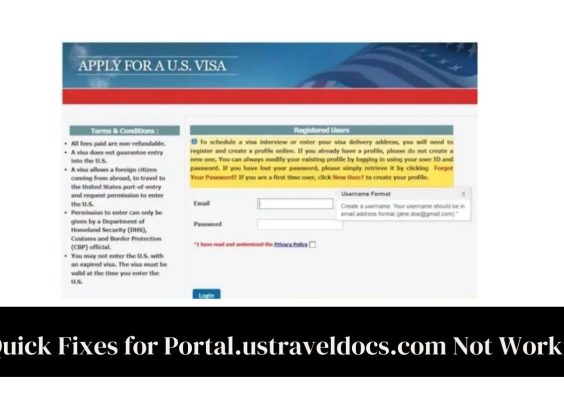Want your HVAC company to show up when someone searches “AC repair near me”? Local SEO is your best friend. It can drive calls, form fills, and foot traffic. Best of all—it’s not rocket science!
This step-by-step guide will walk you through everything you need to know in plain English. Even if you’ve never heard of SEO before, you’ll leave this guide ready to grow your HVAC business in 2025.
Contents
Step 1: Claim and Optimize Your Google Business Profile
If you do nothing else, do this one step.
- Go to Google Business Profile
- Search your business—claim it if it’s already there
- If it’s not there, click “Add your business to Google”
Add these details:
- Exact business name
- Primary category: Something like “HVAC contractor”
- Accurate address and service areas
- Business hours
- Phone number and website
- Photos: upload real work photos, team photos, trucks, etc.
Google loves complete profiles. Fill it out as much as possible!
Bonus tip: Post weekly. Use posts to share updates, promos, or seasonal tips.
Step 2: Get Positive Reviews
Online reviews = digital word-of-mouth. They matter a lot.
Here’s how to get more:
- Ask every happy customer
- Text or email them a direct link to your Google profile
- Respond to every review—good or bad. Be polite and professional.
More reviews = higher ranking in local results. Aim for at least 10 solid 5-star reviews to start.

Step 3: Ensure NAP Consistency
NAP stands for Name, Address, Phone number. Keep it consistent everywhere online.
Check your info on:
- Bing Places
- Yelp
- Angi
- Better Business Bureau
- Chamber of Commerce sites
If your name says “Tom’s Heating & Air” on one site and “Tom’s Heating and Air Conditioning” on another—that’s a problem. Google might think they’re two different businesses!
Step 4: Create Local Content on Your Website
Your website isn’t just a digital brochure. It should also help you show up in local searches.
Here’s what to focus on:
- Use city + service keywords in your titles and content (like “Furnace Repair in Dallas”)
- Write blog posts about local topics—“How to Prep your AC for Phoenix Summers”
- Add service area pages if you cover multiple cities—one for each
- Include customer testimonials with city names
Google rewards useful, location-specific content. You don’t need to blog every week—just be helpful and local.
Step 5: Use Schema Markup
This one sounds techy, but it’s not too bad. Schema is code that gives Google extra info—like your reviews, hours, and services.
You can use a free tool like TechnicalSEO’s schema generator to create it.
Add schema for:
- Local Business
- Reviews
- Services
If you have a web developer, ask them to install it. If you use WordPress, there are plugins to help you add it without touching code.

Step 6: Build Local Citations
Citations are online mentions of your business name and contact info. They help build trust with Google.
Good places to add them include:
- Local directories
- HVAC association websites
- Local newspapers
- Industry blogs
Use tools like BrightLocal or Whitespark to find places to list your business.
Step 7: Build Local Backlinks
Backlinks = another major SEO signal. A backlink is when another site links to yours. It’s like a vote!
Here’s how to get local backlinks:
- Sponsor a local event or youth sports team
- Join local business groups—they often link to members
- Reach out to local news outlets with tips or updates
- Write helpful blog content that other businesses share
You don’t need hundreds of links. Just a few good ones can boost your visibility fast.
Step 8: Track Your Results
You’ve done the work—now track it!
Use tools like:
- Google Business Profile Insights – to see how people find you
- Google Analytics – shows who’s visiting your site, and from where
- Google Search Console – shows what search terms you rank for
If you run ads, you should also track calls and form submissions through your CRM or call tracking tools.
Try checking results monthly. Celebrate your wins and course-correct what’s not working.
Step 9: Keep It Up!
Local SEO isn’t a “set it and forget it” deal. Keep improving over time:
- Add new reviews every week
- Update your Google profile with new photos
- Write seasonal blog tips
- Stay active in your community
As new HVAC companies pop up in 2025, staying consistent will help keep you at the top.
Bonus: Common Mistakes to Avoid
- Fake addresses: Don’t make up offices you don’t have.
- Neglecting reviews: Google notices when your competitors have 100 and you have 2.
- Keyword stuffing: Don’t write gibberish like “AC repair Springfield Springfield HVAC furnace.”
- Missing contact info: Always keep phone numbers and addresses correct.
Final Thoughts
Local SEO isn’t complicated—it just requires consistency. As an HVAC pro, you’re focused on quality service and happy customers. Local SEO lets you take that same mindset to the web.
Be patient. Results don’t happen overnight. But every step you take brings your name higher on the screen—and closer to being the top choice in your area.
Need help? You don’t have to go it alone. But if you follow this guide, you’ll be miles ahead of most HVAC businesses. Happy optimizing!




